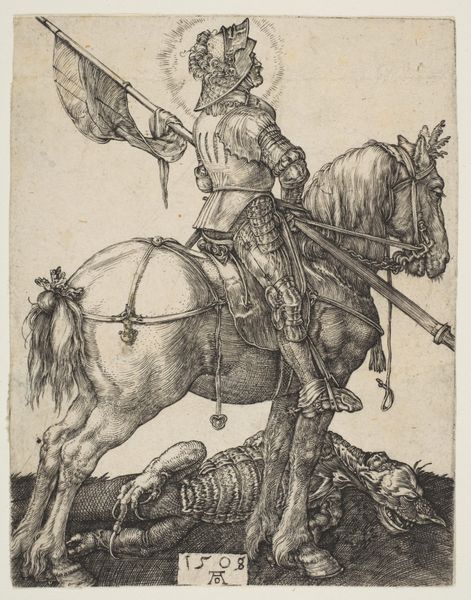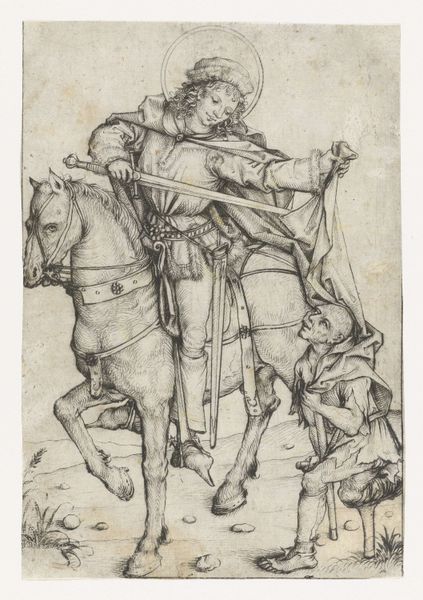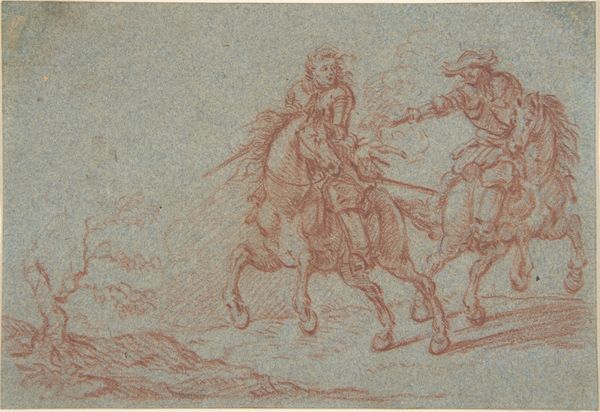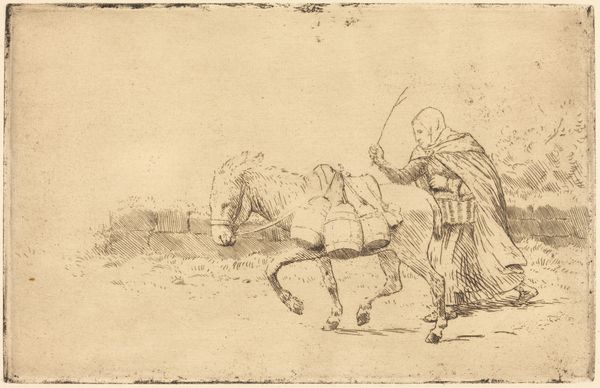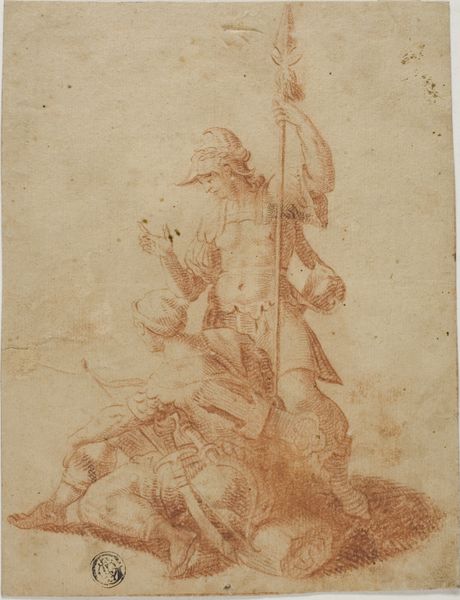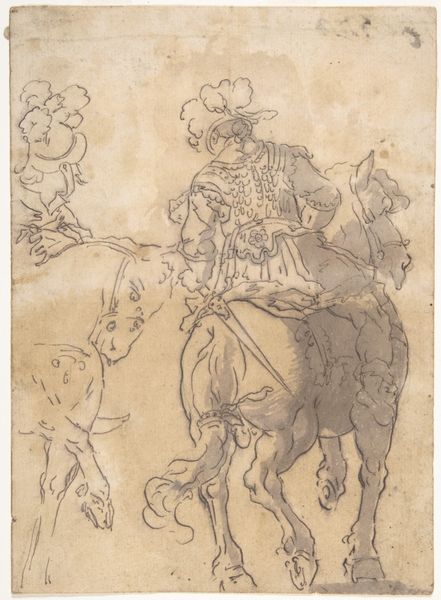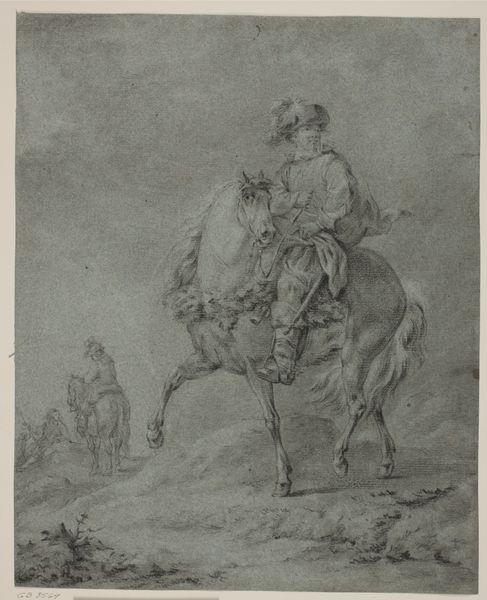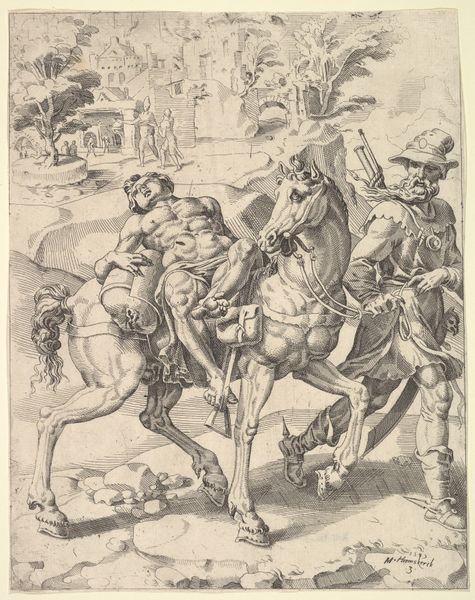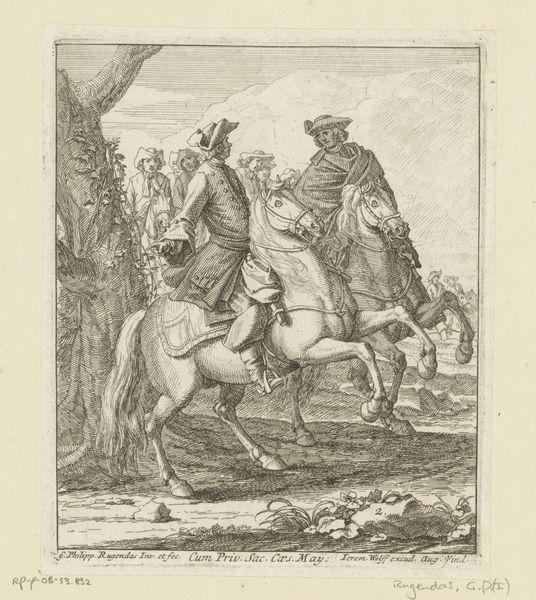
drawing, paper, ink, pen
#
drawing
#
landscape
#
figuration
#
paper
#
11_renaissance
#
ink
#
pen
#
history-painting
Dimensions: height 80 mm, width 64 mm
Copyright: Rijks Museum: Open Domain
Curator: This drawing from the early 17th century by Adam Elsheimer depicts a dramatic scene. The work, rendered in pen and ink on paper, is entitled "Bileam op zijn ezel ontmoet de engel," or in English, "Balaam on his donkey meets the angel". Editor: Oh, wow! I'm immediately struck by the dynamism. You can almost feel the donkey balking. And the angel--intense! There’s this great, raw energy about the strokes. It looks so immediate and… urgent, I guess? Curator: Absolutely. The subject matter, taken from the Book of Numbers, highlights themes of disobedience and divine intervention, issues that resonate in different times and settings. We can explore Elsheimer’s construction of power in the way that he positions the angel. It can reveal how he reflected socio-political climates, thinking about justice, fate and personal agency at the time. Editor: And speaking of construction, look how Elsheimer uses light and shadow. It really emphasizes the supernatural drama. And, I just love the almost cartoonish surprise on the donkey’s face. Is that okay to say? Does it sound ridiculous? Curator: Not at all. Understanding how popular narratives work to emphasize particular ideals, that might be just the connection. It serves to create an effect in which it heightens our ability to recognise a kind of caricature. This image does that. If Elsheimer lived in the 21st century, I could totally see him doing political cartoons, in fact! Editor: Okay, good. But there’s also something so delicate and personal about a drawing like this. You get this insight into Elsheimer's thought process. I find myself wondering about his daily life. What else did he see and think about when he was alone in his studio? Curator: That personal element speaks to the tradition of humanist philosophy that emerged from the Renaissance, which centered the importance of self-discovery, human expression and the importance of the natural world. With works like these, we find moments in the re-shaping of subjectivity. Editor: Thinking about what this artwork represents, and also how, what else is there? I wonder... Curator: Its continued relevance is a testament to the enduring power of art to capture those perennial issues about ourselves and the divine at particular intersections in history.
Comments
No comments
Be the first to comment and join the conversation on the ultimate creative platform.


